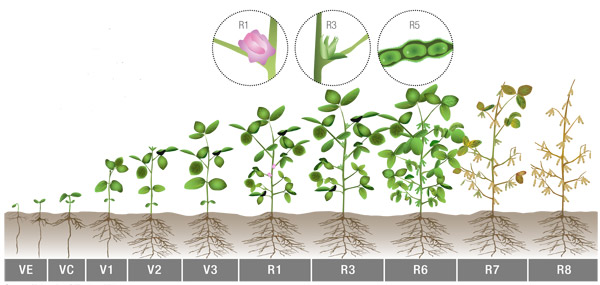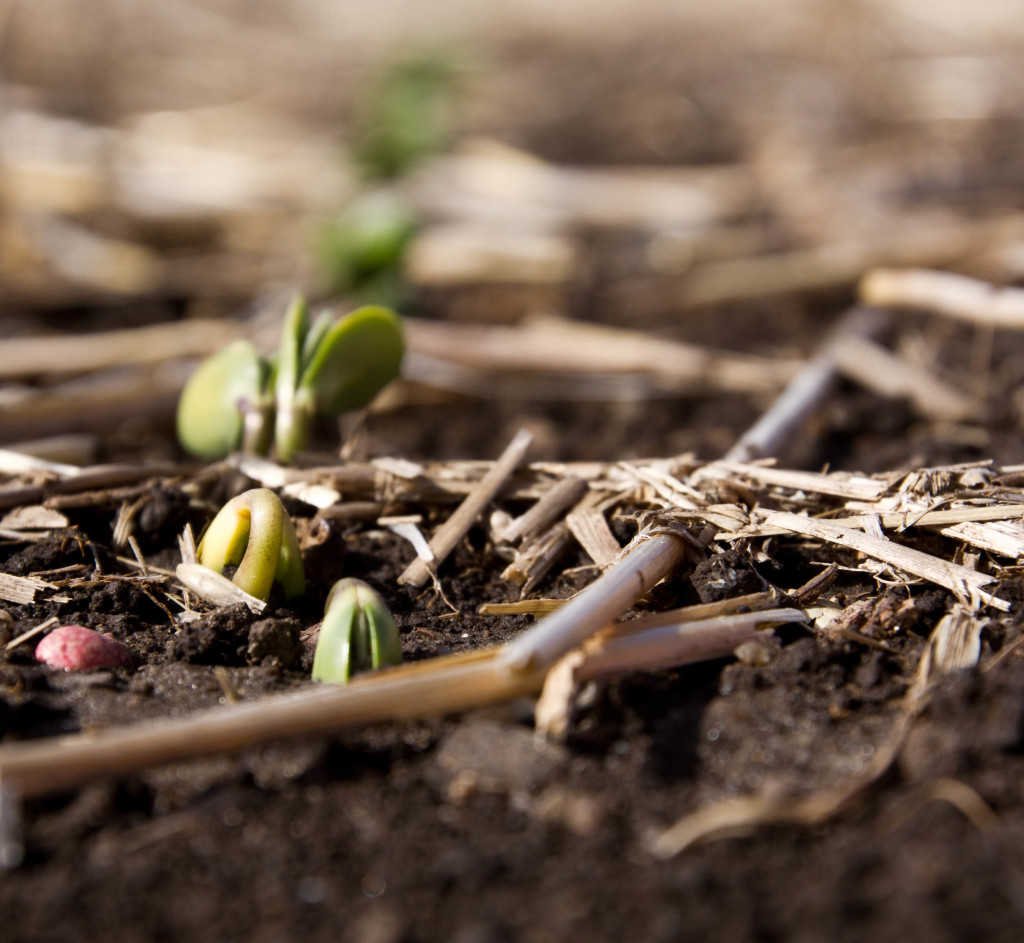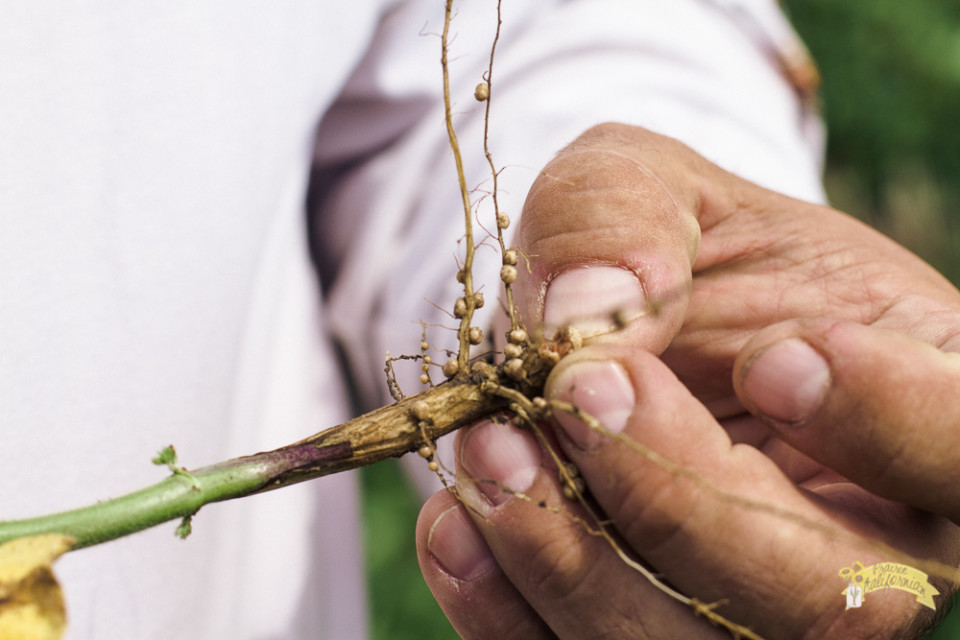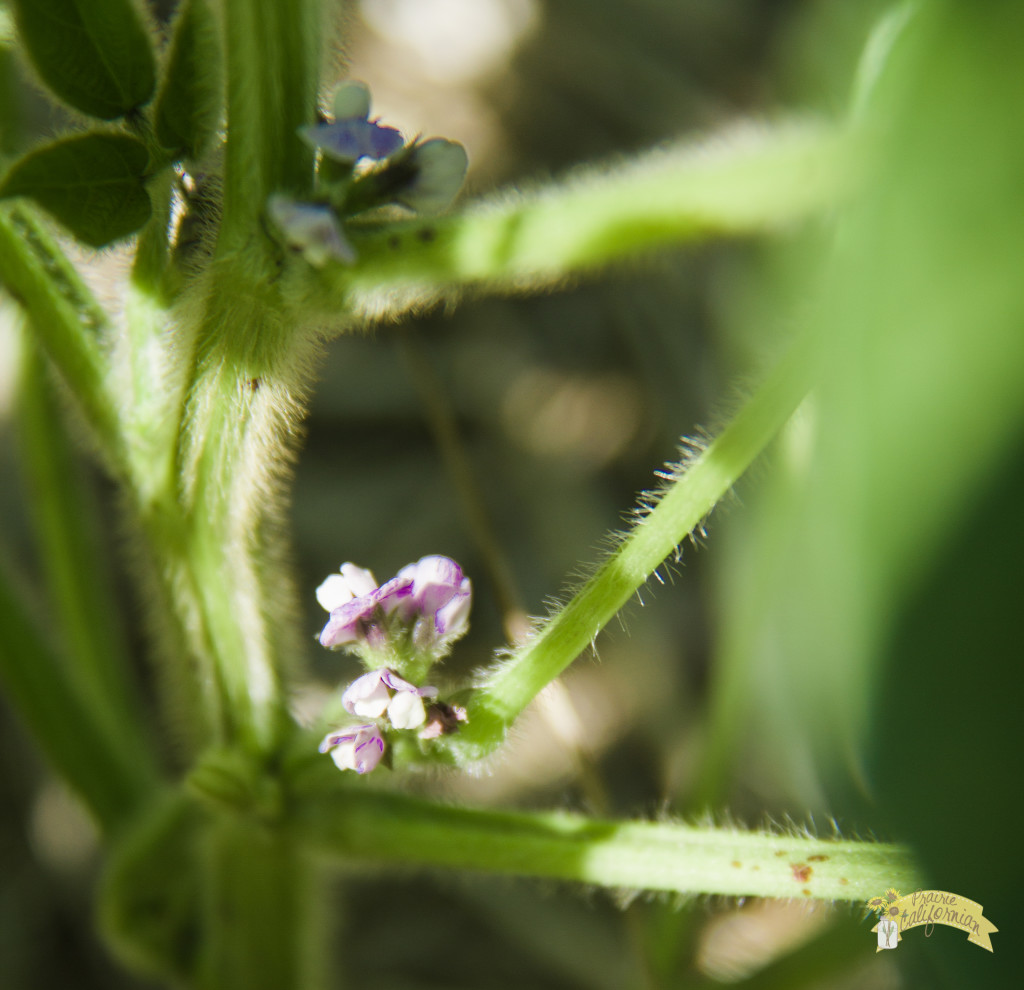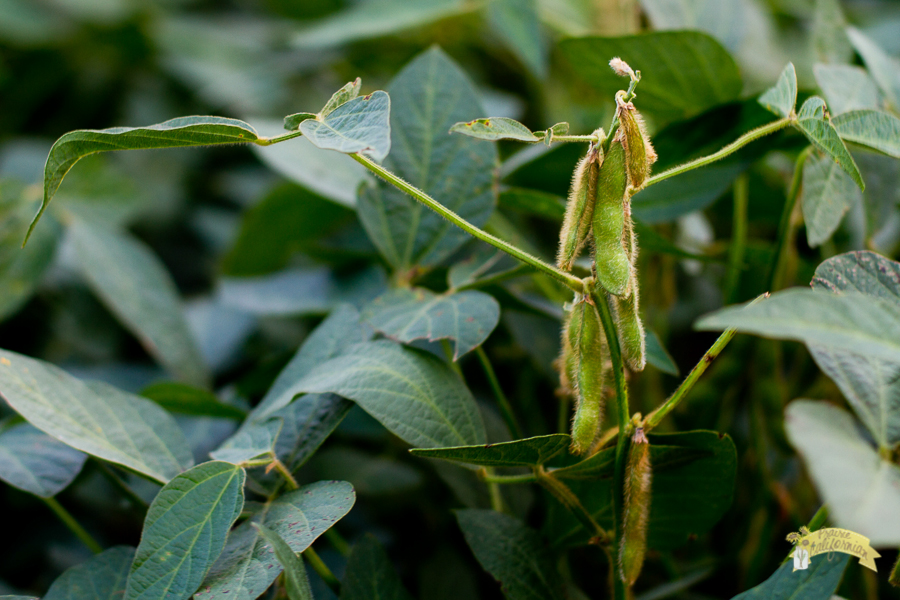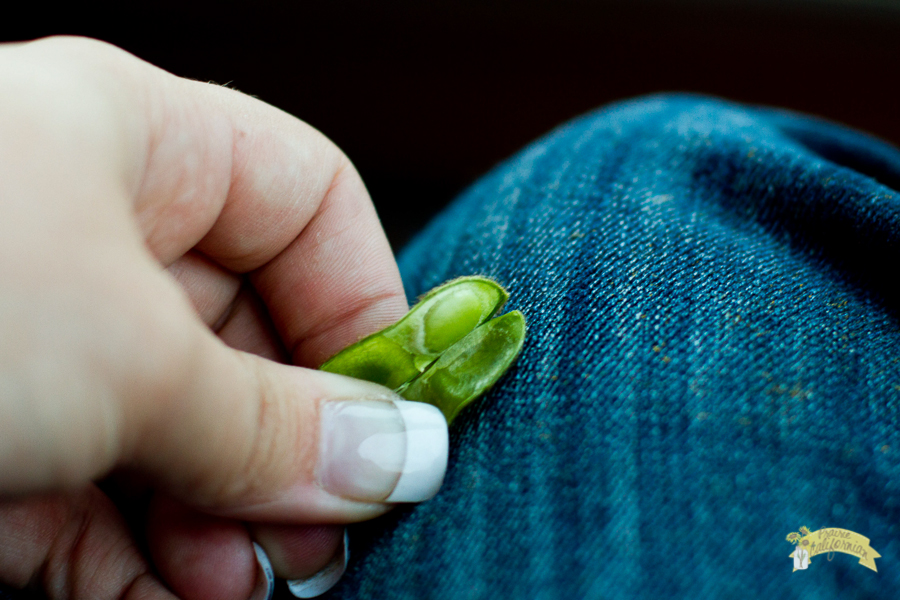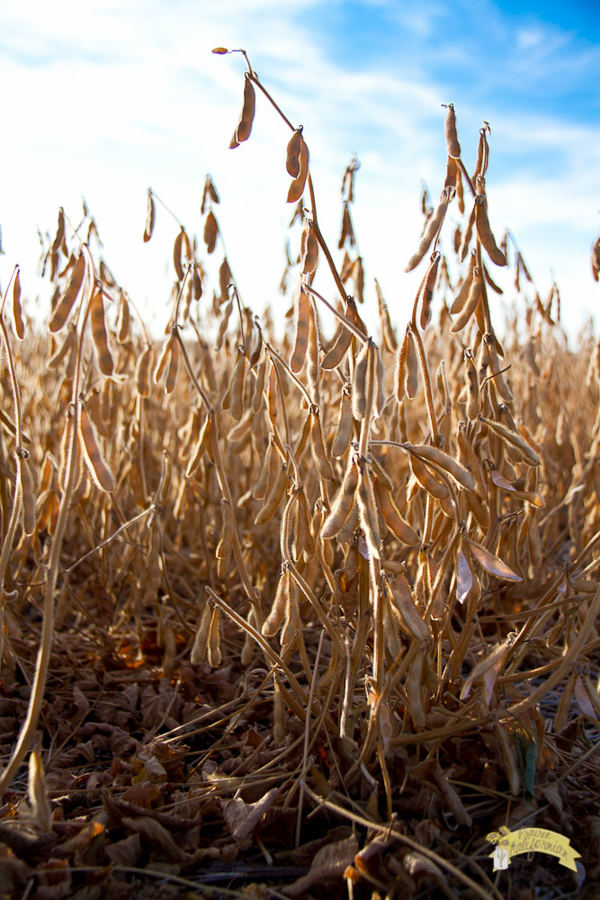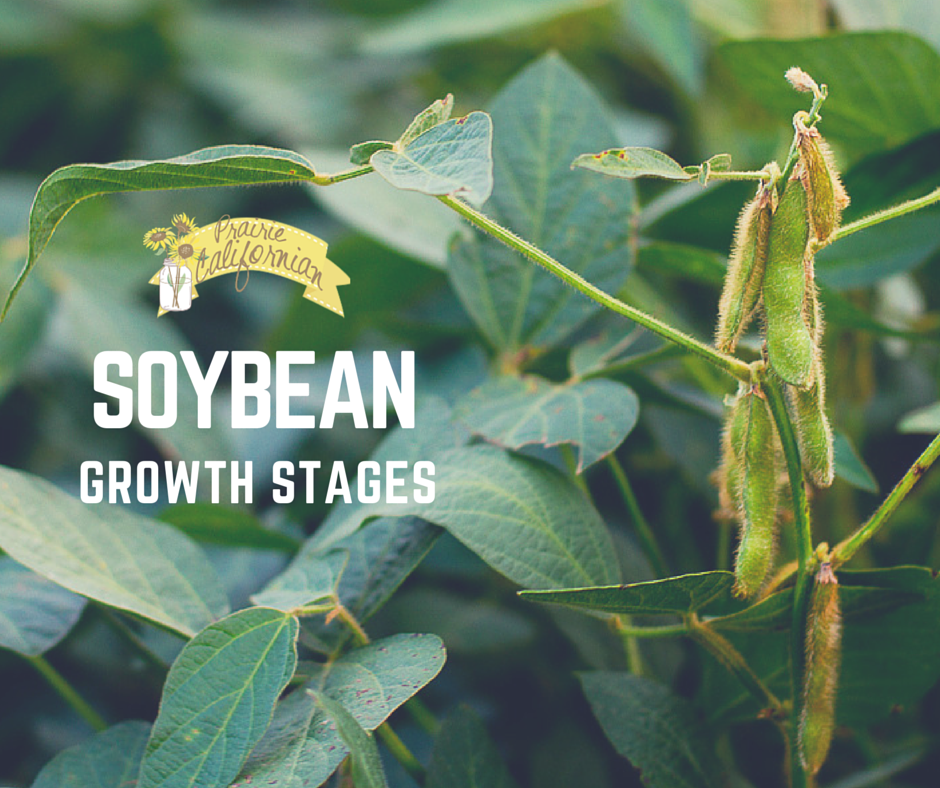
I hope you all have been enjoying the Crop of the Month posts! Many of you enjoyed the wheat growth stages post I wrote so I wanted to do the same for soybeans. I’ve already shared a little bit about the history of soybeans here in the United States as well as some great recipes including soy ingredients.
Why Do We Grow Soybeans?
Soybeans are not a crop that was typically grown here in North Dakota, but yet in 2014 North Dakota broke record numbers, why is that? There are many, many reasons that could explain the adaptation of soybeans up here. Certainly, the rapid pace of technology and genetic adaptations in row crops like soybeans lend to the movement to soybeans throughout the Plains. As I discussed a bit last time, new varieties soybeans can now be planted in places they never were able to be planted before, such as farther west and north in climates with drier conditions or shorter growing seasons.
We grow soybeans on our farm because they are a great stable crop for our area. While corn can be a high risk crop for our area, soybeans are a pretty tolerant crop. We need a crop that can be seeded into wheat residue that has the potential to be wet after a long winter. Soybeans are a great fit for this because they allow us to seed in a wide range of planting dates. Here in North Dakota, we can plant soybeans from May until July for harvest in the late fall.
So How Do Soybeans Grow?
Soybeans are a legume plant that contain leaves called trifoliates, which essentially means having three leaflets per leaf. The pod, stems, and leaves are covered with fine brown or gray hairs making them “fuzzy” to the touch. Soybeans, like many legumes, contain symbiotic bacteria called rhizobia within nodules formed on their root systems. These bacteria have the special ability of fixing nitrogen from the atmosphere for use within the plant. You can tell if a plant is creating its’ own nitrogen by squeezing these nodes on the roots with your fingers and finding a reddish/rust-colored liquid.
Soybean growth stages are divided into two different broad stages depending on plant development. The first stage is vegetative (V) stages and the second is reproductive (R) stages. The vegetative stages are numbered according to how many trifoliate leaves are present. The reproductive stages begin at flowering and also include pod development, seed development, and maturation.
These stages can overlap so when determining growth stage of the crop, a growth stage typically begins when 50% or more of the plants are in or beyond that stage.
Vegetative Stages (V)
Soybean seeds begin to germinate when soil temperatures are above 55 degrees, however, germination is likely to be slow until soil temperatures warm up to 70 degrees or warmer.
After the soybean seed is planted in the soil, it will start to absorb water and swell and as a result changes the moisture content from around 13% to almost 50%. With favorable temperatures, within one or two days the first root can emerge through the seed coat. Five to ten days after planting, a new seedling will emerge.
Obviously the first stage of growth is emergence and is marked by the letters VE. Emergence happens when the first oval leaves called cotyledon emerge. The cotyledons are a temporary source of stored food for the seedling. The next stage occurs after cotyledons have fully expanded and unifoliate leaves have unfolded. This stage is marked by the letters VC. After the first set of true leaves form, the cotyledons will eventually drop off.
The next couple stages in vegetative growth are marked according to the set of trifoliates the plant has grown. In ideal conditions, new V stages can develop every 5-7 days so the vegetative stages go quickly. The V1 stage is marked by the first trifoliate. Those nitrogen fixing nodules (shown in the photo above) will be visible but not yet working. V2 is marked by two fully developed trifoliates and the root nodes have begun actively fixing nitrogen. It is also during this stage that the cotyledons fall off.
During V3- V4, as you’d assume, third and fourth trifoliate leaves unfold and a dramatic increase in the number of root nodules will be visible. The remaining V stages are marked by Vnth as trifoliate leaves continue to unfold. The final number of trifoliates depends on the soybean variety and environmental conditions. It is during these stages that root growth of the plant can increase to 0.5 to 0.75 inch per day.
Reproductive Stages
The first reproductive is called beginning bloom and is marked by the letters R1. This stage occurs when one flower is open at any node on the main stem of the plant. Soybeans self pollinate so they do not require a pollinator or wind like corn needs. Self-pollination occurs before flowers open, which makes cross-pollination events very rare.
R2 marks full bloom which means an open flower at one of the two uppermost nodes of the main stem. R3 marks the beginning of formation of pods. Pods will be 3/16 inch long at one of the four uppermost nodes on the main stem during R3. R4 moves into full pod, where the pod will be 3/4 inch long at one of the four uppermost nodes on the main stem. R4 also begins the most critical period for seed yield, any environmental stress during R4-R6 can cause yield reduction. Yield equals a combination of base population, pod number, seeds per pod, and seed weight.
During these next stages, root growth slows as seed growth begins. nitrogen fixation will peak and then rapidly decrease. The plant will also reach its maximum height, node number, and leaf area. Soybean pods average about 3 seeds per pod and are typically about one to three inches long. 4 or more seeds in a pod can occur but it’s not common.
R5 is beginning seed, marked by seed in one of the four uppermost nodes on the main stem is 1/8 inch in size. R6 marks full seed where a pod containing the green seed fills the pod cavity present at one of the top four nodes on the main stem. Between R6 and R7 stages, root growth is complete and total plant pod weight is maximized.
Prior to R7, plants will begin to shed leaves. Beginning maturity is stage R7 and occurs when one pod on the main stem has reached its mature color (basically yellowish, brown). It is during this stage that the crop can be safe from a frost. R8 marks full maturity or when 95% of the pods on the plant have reached their mature color. Typically at this point seed moisture is around 35% and anywhere from 5-10 days of good drying wather is needed to bring the seeds to less than 15% moisture for harvest. For us in North Dakota, high winds and quick changes in temperature and humidity can both knock soybean pods off the plants or it can cause the pods to simply abort the seeds even before they’ve reached full maturity for harvest.
Conclusion & Harvest
Once soybeans reach optimum moisture for harvest, we cut them using a combine as seen in the video below.
With the invention of the combine, we can (on average) harvest around 600-800 bushels of soybeans an hour. One bushel of soybeans produces 1.5 gallons of soy oil and 48 pounds of soybean meal which then supplies 21 pounds of animal feed. If we do some math here, in one hour we can produce enough soybeans to make 1,050 gallons of soy oil, 33,600 pounds of soybean meal, and 14,700 pounds of animal feed. Pretty amazing!
Resources
Channel (2013). Soybean Growth Stages
Iowa State University (2007). Soybean Growth Stages.
Naeve, S. (2011). Growth Stages.
Rohrich, J. (2012). ND Soybeans from Field to Harvest.

